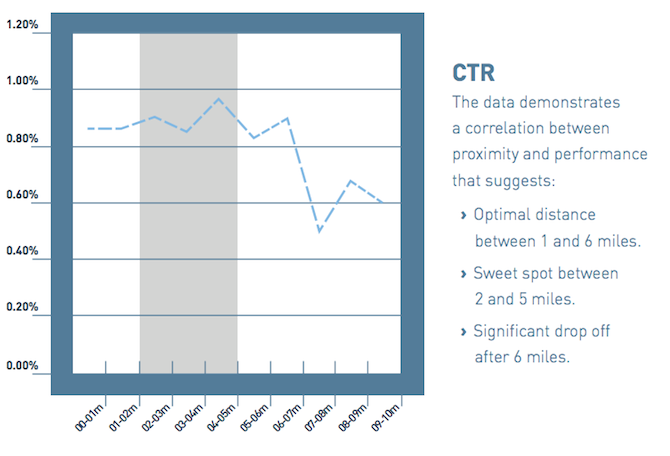When it comes to mobile advertising, context is everything. Who is seeing the ad? Where is it showing up? And what exactly are customers doing when they see it? Remember, unlike broadcast, digital, and print, mobile content can be accessed everywhere—and it is. People refuse to go anywhere without their phone.
Racking up a mountain of raw impressions is no longer good enough; the ad has to reach eyeballs belonging to a relevant audience. The impressions have to actually have to mean something.
But where to find those millions of relevant eyeballs?
Of the available tools mobile advertisers are using to target the ideal customer, one of the most popular remains Geo-Targeting—the broad term applied to any and all strategies that use location data to determine who is and is not a part of that perfect audience. For example, a swimwear brand might choose to exclusively run ads in areas with the warmest weather, or a QSR franchisee would only want to target customers whose mobile GPS puts them within convenient proximity to his own locations.
Or both: Say you represent a soft drink company who is using co-op dollars to subsidize mobile ads for a national QSR brand. Since your ad features an ice-cold glass of soda pop, you might only want to target an audience that happens to be near relevant QSR locations AND in areas with warm weather.

Businesses can create custom geographic areas within which customers will see a mobile ad
According to Verve Mobile’s “State of The Market Report” for H1 2013, the click-through rate for geo-targeted mobile advertisements ranges from 2-3x better than the industry average.
-
“We believe the future of advertising will center around location—with mobile being a very important delivery vehicle of this,” said Monica Ho, vice-president of marketing at xAd. “Ultimately, you make your marketing smarter through location. By leveraging location and other local context variables, marketers can now optimize when and where their ad messages appear, which ultimately increases relevancy to the end user while reducing ad waste for the advertiser.”
Geo-Precise Audience Targeting vs. Standard Location Targeting
There are two different approaches used to determine how a mobile ad campaign is geo-targeted, Standard and Precise.
Standard Location Targeting uses existing geographic boundaries to determine the effective range of the ad, including zip codes, DMA, etc. This type of targeting can be effective for large-scale campaigns to build brand awareness, or when used in conjunction with other promotions valid throughout an entire established area.
Geo-Precise Targeting, on the other hand, allows mobile advertisers to customize the geographic boundaries of their campaign however they see fit (“Geo-Fencing”). Only customers within these geo-fenced areas will receive the targeted ads on their mobile device. Brands hoping to promote specific locations or events, or drive in-store foot traffic, would see better results with precise targeting.
According to Verve’s report, the optimal radius for geo-fencing as it relates to mobile advertising is between 4-5 miles, with a sharp drop in click-through rate occurring after the 6 mile mark:

Image courtesy of Verve Mobile
The effectiveness of standard location targeting vs. geo-precise targeting will depend on the advertiser’s individual needs, but precise targeting is more popular by far. According to a recent report by xAd, 93% of national brand advertising campaigns that used location targeting in Q3 of 2013 employed geo-precise targeting.

Image courtesy of MarketingCharts.com
Geo-Conquest
Another, slightly sneakier tactic is “Geo-Conquesting,” which has recently been gaining traction amongst certain types of businesses as a valid means of luring customers away from the competition. Using geo-fencing, advertisers establish a geographic perimeter around a competing location, and focus the reach of their mobile advertisements to target customers whose mobile GPS reports their longitude and latitude within that perimeter.
In other words, people near your competitors will see your mobile ads.
So far, geo-conquesting has proven most effective for basic commodities businesses and restaurants—industries where the customer’s decision-making process is more prone to change on a whim. Brand categories that require in-depth purchase consideration, like auto dealers, tend to see better results by targeting customers near their own locations. Chrysler recently reported poor results from their geo-conquesting campaign:
-
“We’re not seeing a lot of success within competitors’ lots, but we are seeing success within our own lots,” said Amy Peet, Senior Digital Marketing Manager, Chrysler.
Peet then hammered home the importance of Chrysler’s mobile advertising efforts with a surprising statistic:
-
“Forty-five percent of the brand’s traffic now comes from mobile.”
Chrysler isn’t the only brand seeing a huge up-tick in mobile traffic, and advertisers are finally catching on.

